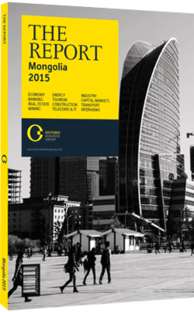Mongolian banks' strong track record in reaching residents in remote areas
In some ways, Mongolia can be considered “well-banked” in terms of banking access. It has one of the highest branch per capita ratios in the world. At 69 per 100,000 (according to World Bank 2012 numbers), it has far more banking outlets for each inhabitant than its peers and neighbours: South Korea is at 18; China, 8; and Russia, 38. Additionally, over 80% of Mongolians have bank accounts. In other ways, however, there is poor access to banking. Mongolia’s branch per sq km ratio is very low, at 0.67 (compared with Korea's 50).
Reach
Banks themselves have done a good job of reaching far-flung regions. Khan Bank boasts a retail presence that reaches the most remote areas of the country with 530 branches spanning every province and district centre and at every border point. The bank also has more than 300 ATMs – its first ATM outside the capital was installed in 2007. XacBank has had branches in all the country's 21 provinces since 2002. State Bank of Mongolia, which is fully owned by the government and absorbed Savings Bank in 2013, has over 500 branches in the country and provides a range of vital services. According to Bank of Mongolia data from early 2013, Mongolia had 3.7m accounts in the provinces outside the capital (in a country of 3m people).
For some institutions, serving the countryside is simply good business. Herders can have significant amounts of cash to be deposited for security reasons, while many in the rural areas have a relative in Ulaanbaatar and need banking services to send or receive money. The country also has over 100 savings and credit cooperatives, half of which operate outside the capital.
Mobile Services
Gaps in coverage are inevitable. Given the great distances between major population centres and the lack of people in certain areas, banks will never be able to reach everyone directly. Some of these gaps are being filled by technology, with all major banks offering mobile and Internet banking. Khan Bank has had a mobile banking product since 2007, while other major banks have since followed. Mobile phone providers have also introduced their own money and transaction-related products and services, such as MobiCom's MibiXpress e-money. Over the years, the platforms have improved considerably, and smartphone apps are available that allow customers to conduct a wide range of transactions from their mobile terminals. Less bandwidth-dependent technologies, particularly SMS, continue to be maintained and can be used for certain limited banking services. Some people in remote areas are still using 2G devices or lack of 3G signals.
The network has played a role in the expansion of financial services into rural Mongolia. Mobile phone penetration is at 124%, and significant work has been undertaken to make sure that signals are available in remote areas. In cooperation with the World Bank, the government established a Universal Service Obligation Fund in 2006, which uses mandatory payments from the telecoms companies to finance infrastructure that otherwise would not be commercially viable. As a result of the programme, as well as direct assistance from the World Bank and others, all the 355 districts have wireless connections and at least 35 have been connected to broadband. The main focus is to bring herders onto the grid, greatly increasing their access to and their demand for mobile financial services.
Enthusiasm for smartphones has created a welcoming environment for branchless banking in major cities. Mongolia is not only well connected, its Internet infrastructure is efficient and well maintained, allowing for strong signals, low latency and a very active base of mobile broadband consumers. Customers are increasingly opting for mobile banking over waiting in long lines.
Swipe
On the payment side, Arig Bank recently introduced SWIPE, a smartphone-based product that allows small businesses to take card payments without the use of a card reader. This greatly reduces entry costs for small businesses and allows them to start taking cards without meeting high minimum volumes. Innovations like this are resulting in more inclusive, broader usage. Very small businesses, such as shops and independent salespeople, can now start accepting card payments.
You have reached the limit of premium articles you can view for free.
Choose from the options below to purchase print or digital editions of our Reports. You can also purchase a website subscription giving you unlimited access to all of our Reports online for 12 months.
If you have already purchased this Report or have a website subscription, please login to continue.

